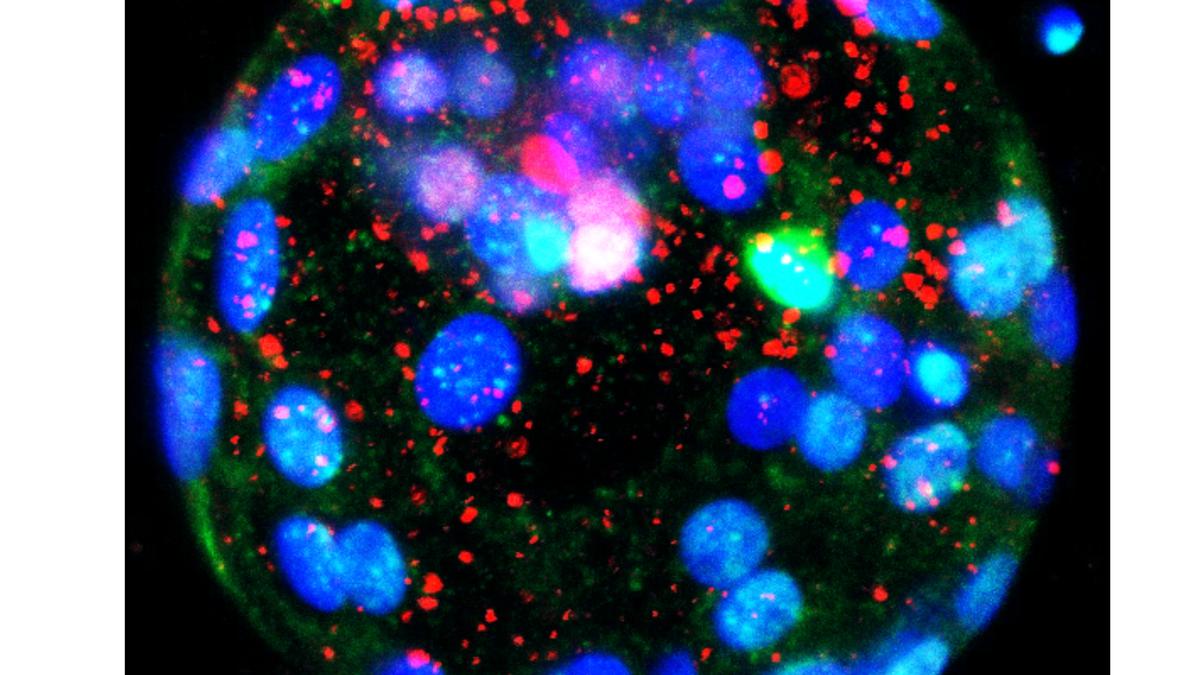
Discovered: A mechanism that quietly removes unfit cells before you’re born Premium
The Hindu
Scientists have found a group of hitherto unknown cells that die early during embryonic development. Using gene-expression tests, they discovered that a gene called HERVH protects embryonic cells from transposons that cause DNA damage. The cells that don’t express HERVH are damaged by the transposons and die, leaving only the healthy cells to form a foetus.
Let’s take a trip back in time, to when you were just made up of a single cell. The sperm from your father and the egg from your mother will have just fused, forming a single-celled zygote. This zygote is now going to keep multiplying to form many cells, marking the start of embryonic development.
At some point, this mass of cells, making up the early embryo, will have implanted in your mother’s womb and begun to grow bigger. The cells will also have started to differentiate, transforming into all the different kinds of cells that make up who we are – skin, muscles, nerves, etc. Over time, the cells will also have developed into heart, lungs, the brain, and so forth. Finally, a whole nine months later, you will have been born, as a fully formed human baby.
In the early stages of the human embryo, before it has implanted in the mother’s womb, the cells arrange themselves in a particular way. A blob of cells gathers towards one side of the embryo and the other cells arrange themselves around this blob. This blob is called the inner cell mass. It contains cells with the ability to make all the other types of cells in the human body – i.e. the cells in this blob are pluripotent. Since a whole human body takes shape from this blob, scientists are naturally very interested in studying it in detail.
One way that scientists study cells is by looking at the kinds of proteins the genes in the cells can make. That is, they look at gene expression data. With this, they can see which genes are on or off in each of the cells they study.
In 2016, Manvendra Singh, then a graduate student with Zsuzsanna Izsvak at the Max Delbrück Center for Molecular Medicine in Berlin, reanalysed previously published gene expression data from an early human embryo, and was surprised.
Among the cells of the inner cell mass, he found a new group of cells that hadn’t been seen before. These cells were non-committed: they did not become a part of the later stages of the embryo. They seemed to get eliminated early on in development, compared to the other inner cell mass cells, which went on to make the developing embryo. What are these dying cells in the developing human embryo, and why do they die so young?
A 2014 study from Dr. Izsvak’s lab had shown that human embryonic stem cells express a gene called HERVH, a virus-like gene that’s important in maintaining pluripotency. Based on his analysis of the gene expression data in 2016, Dr. Singh found that most of the inner cell mass cells also express HERVH – but not the non-committed cells that eventually die.













